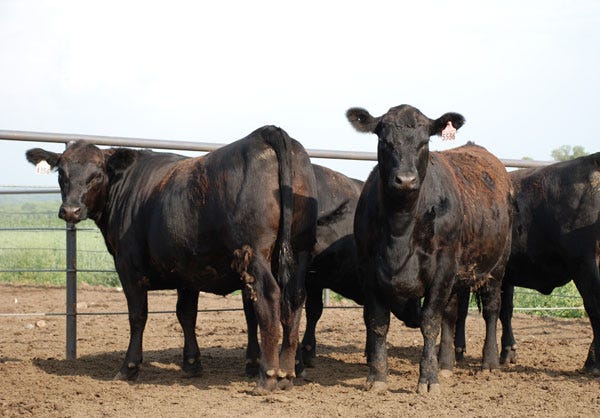6 Trending Headlines: Upside limited in feeder cattle market? Plus: Questions for startup stocker operators
While the market for both fed cattle and feeders has held up remarkably well so far this year, is the upside potential for feeder cattle prices limited? Check out this week’s Trending Headline for answers.

Cattle feeding losses will limit upside to feeder prices
For the balance of this calendar year, the Livestock Marketing Information Center (LMIC) estimates breakeven fed cattle sale prices, based on feeding out a 700-to 800-pound animal, for a typical steer are in the $120s per cwt. So, more red ink is projected on feedlot closeouts. Steers placed into feedlots during August or September, most of which will be marketed in early 2018, are expected to have breakeven sales prices in the $118 to $121 per cwt. range, according to the Daily Livestock Report.
From a cattle feeder’s perspective, all the profit potential has already been bid into feeder animal prices. For the next several months, there appears to be limited additional upside in cash feeder cattle prices.
Wild things: Cull the cattle that are hard on you and your bottom line

"Wild cattle are hard on equipment, people, other cattle, and now we know that they are hard on the bottom line," observes Glenn Selk, Extension animal scientist emeritus at Oklahoma State University.
To prove his point, Selk references a study conducted by Mississippi State University researchers that used a total of 210 feeder cattle consigned by 19 producers in a 'Farm to Feedlot' program to evaluate the effect of temperament on performance, carcass characteristics, and net profit.
Researchers found that exit velocity as animals left the chute and pen temperament scores were highly correlated. As pen scores increased, so did exit velocity. As pen score and exit velocity increased, health treatment costs and number of days treated increased, while average daily gain and final body weight decreased. Ultimately, as pen temperament score increased, net profit per head tended to decline.
Texas cattle have it made in the shade

An innovative new animal welfare product installed recently at the Texas Tech University Beef Center is providing researchers with a unique opportunity to evaluate the impact shade can have on animal health and wellness.
Nathan Reeves, director of the Beef Center, helped oversee the installation process. He said he has already seen the positive effects it has on the cattle, noting that the system can reduce temperatures on the pen floors by as much as 20-30°F.
An ag lender’s questions for startup stocker operators

If you’ve always been curious about adding stocker cattle to your ranch business, then consider the answer to some pointed questions before visiting with your lender, says The Cattleman magazine.
First, do you have the resources — the feed, facilities, and the labor? Then, what forage or feed do you have that can be used to put weight on stocker calves? When during the year is that forage or feed available? When is that forage of the right nutritional quality to make the calves gain weight? Are your facilities, pens and fences adequate for a stocker program? Do you have enough labor and expertise to properly manage stocker cattle?
The list goes on. Click here to learn more.
Can wildlife improve your bottom line?

As the fall harvest wraps up and this year’s calf crop is weaned, many producers may be nervous about what their paychecks will look like. These conditions might be an ideal time to prioritize wildlife and habitat conservation, and be creative about how these often untapped resources can be used to provide additional income during the lean years, reports onpasture.com.
An obvious starting point when considering how to earn additional income from natural resources is through hunting. Beyond that initial point, it quickly becomes complicated. Hunting ventures, like any other enterprise, exist on a wide spectrum of inputs and profitability. The potential for profit varies widely with how much labor, infrastructure, and marketing effort you are willing to commit.
Click here for more details on how hunting and other opportunities might work for you.
Modern farming, not organics, credited with reducing greenhouse gases
To feed a global population that has expanded from 3.7 billion in 1970 to about 7 billion today, agriculture has had to up its game. During this same time, agriculture (both plants and livestock) production has more than doubled.
“Further intensification is necessary, so we need to make sure that this intensification is sustainable.” That’s the conclusion of the authors of an European study that looked at organic food production versus modern, more intensive food production. And the researchers found that modern production practices produce less greenhouse gas than organic farming, according to the Genetic Literacy Project.
About the Author(s)
You May Also Like


.png?width=300&auto=webp&quality=80&disable=upscale)
